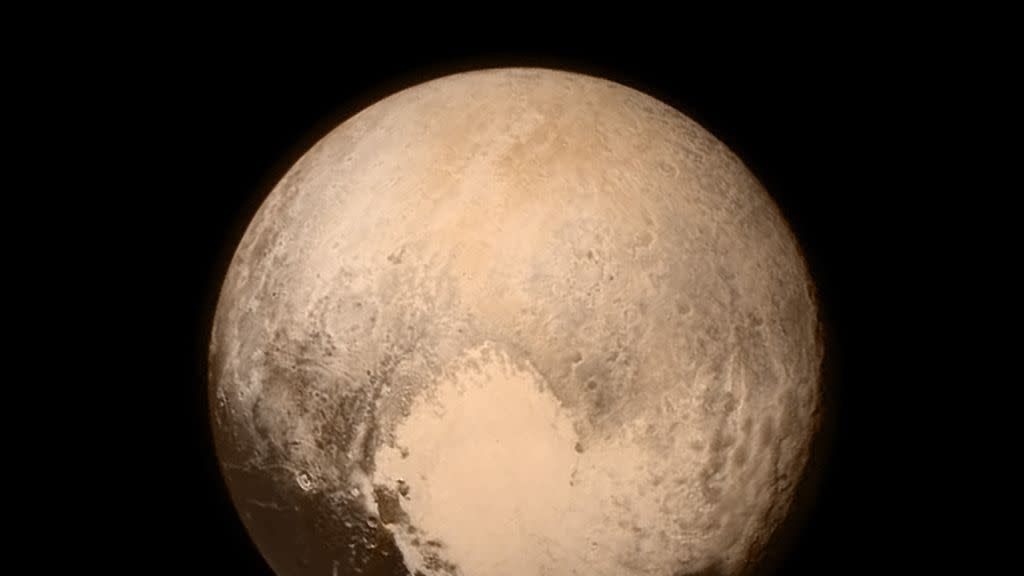Scientists Think They Know How Pluto Got Its Mysterious Heart

"Hearst Magazines and Yahoo may earn commission or revenue on some items through these links."
Advancing knowledge of Pluto’s composition has allowed scientists to model its iconic heart.
By entering many variables into modeling software, scientists can test one at a time.
Pluto is not well understood because it’s so extremely far away, leaving much to explore.
In new research, scientists have modeled an impact in space that may explain half of Pluto’s iconic heart-shaped Tombaugh Regio. The Sputnik Planitia basin is shaped like an upside down pear, which the researchers say could be from an impact with a celestial object up to 400 miles in diameter. In their proposed model, an “impactor” composed of ice and rock strikes Pluto’s icy surface, travels through it, and creates a “splat” (technical term!) that lingers to this day.
Pluto may no longer be one of the official planets in our solar system, but the same eccentricities (literally and otherwise) that ruled it out make it interesting to researchers. Yes, Pluto is extremely far from the sun, with a surface temperature that maxes out at about -360 Fahrenheit -- but its quirky orbit also brings it closer to the sun than Neptune at times. This long cycle also creates and then destroys Pluto’s very thin atmosphere, which forms during the warm (less cold) orbital season and literally freezes out of the air during the cold orbital season.
All of this means that Pluto is cold enough on its surface that a disturbance to the ice there could simply stay. If the ice can never melt, then the ice is the new ground. It would be like a crater on Earth’s crust, which may develop plant life over the decades but is still visible as a large impact area on the underlying ground. But Pluto has other craters that have been sanded down and filled up over a long time, indicating that tectonic activity may be working below the scenes to change things. Something about the iconic heart-shaped spot is different, because it shows no signs of being filled in.
Scientists from the University of Arizona and the University of Bern in Switzerland were inspired to make an impact model to try to figure out what really caused the Sputnik Planitia. Their peer-reviewed research appears now in Nature Astronomy. Combining existing knowledge of earth science and geology as well as 2015 findings about Pluto’s complex geology, they modeled all the factors using SPHLATCH, which is an open source code that steps through space impacts like this one.
Full 3D models -- 4D if you count time -- let scientists tune each variable, one at a time, in order to see what happens. The scientists tried impact angles from 0 to 45 degrees, for example, to see what best created the pear shape. If something struck at a perpendicular angle of 90 degrees, the impact would likely just be a circle. Instead, the type of shape suggests that something struck at an angle and created a narrow “drag” that forms the stem end of the pear.
The 2015 exploration of Pluto by the New Horizons probe made this model possible, because we previously knew very little about Pluto’s geology. With more information, this team was able to model Pluto’s composition more accurately. They believe that if an icy impactor struck Pluto’s also icy surface, at first it would land on top, like a splatted snowball. But over time, the rocky portion would sink through the mantle.
“Then it spreads out into a hidden, deeply buried splat, a rocky mass atop the core–mantle boundary,” they conclude.
You Might Also Like


